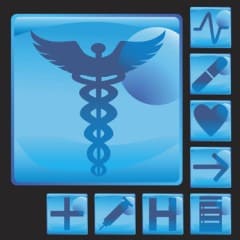
While the ferry business has long been held together with tech — beacons and radio contact — in this new era of IoT, more data makes for better passages.
Name of Organization: Trasmediterránea
Industry: Transportation
Location: Madrid, Spain
Opportunity or Challenge Encountered: For years, operating a ferry service was a logistical operation held together by radio contact and navigational beacons. Now, with connectivity via the Internet of Things, operating ferries takes on a whole new dimension.
Trasmediterránea a Mediterranean-based ferry operator, wanted to put its customers more in touch with the carrier’s operations. The company operates passengers and cargo ferries between mainland Spain and the Canary Islands, the Balearic Islands, and northern Africa. The fleet has 22 vessels that transport more than 2.5 million passengers per year. The company was seeking to develop a customer engagement platform that enables them to communicate more directly with passengers through text messaging or mobile app-based notifications.
How the Opportunity was Met: Trasmediterránea employed a Salesforce app as their point of sale for ticketing, enabling customers to purchase tickets through a mobile app. “They can track the customer but also engage with a customer through that app through push notifications,” Holger Kache, senior product manager for Salesforce IoT, explained in a recent presentation.
The company employs real-time data feeds to track ferries while they’re at sea and monitor fuel consumption. The operations team engages with ferry captains directly using Salesforce applications. The application also tracks the passenger manifest along with emergency contacts — so Trasmediterránea can send real-time texts if ships are stalled or arriving late. “Marine vessels they are equipped with beacon devices that are mandated to send signal to a public marine traffic information system, so that the ferry or any other vessel can be tracked at any given time, they are mandated to sent the timestamp latitude longitude where they are the course over ground speed that they’re driving at,” says Kashe.
See also: Case study — real-time data on the harshest winter roads in the world
All the data points are now collected and available in automated marine traffic systems, which are then consumed by the Salesforce IoT application. The digested data, called platform events, include “details of the journey, who’s the captain, what type of vessel is it, what are the customers who have tickets and are actually on the manifest for that given journey,” says Kashe.
The resulting information, called a context, becomes a join of incoming events the signals with the company’s CRM data, defining the business logic and orchestrations, sent to an engine where rules get executed and trigger actions.
Benefits of this Initiative: The real-time data associated with tracking customers and ferry movements enables Trasmediterránea to act on opportunities as they arise. “They can even monitor their competitors’ ferries and understand if there’s perhaps upsell opportunities if a competitor’s ferry is late to arrive at a given port,” Kache says. “Why not send that customer waiting at the port a discount an incentive to switch tickets?”
In the operations center, a visual map is displayed which plots the journey of all ferries in real time, as well as operational data and statistics. This is helpful for company administrators, “it’s much more interesting to actually help a customer who’s maybe sitting at a port in Barcelona waiting on a ferry to arrive so that he can start his journey,” Kashe relates. “So what happens if a ferry is is late to arrive, so typically you’re sitting there at the port or you’re waiting on on speaker announcements. Wouldn’t it be nice to know what’s going on?” The routing information, now maintained in Salesforce IoT Cloud, “would notify you of the expected arrival of the ferry.”
(Source: Salesforce)































